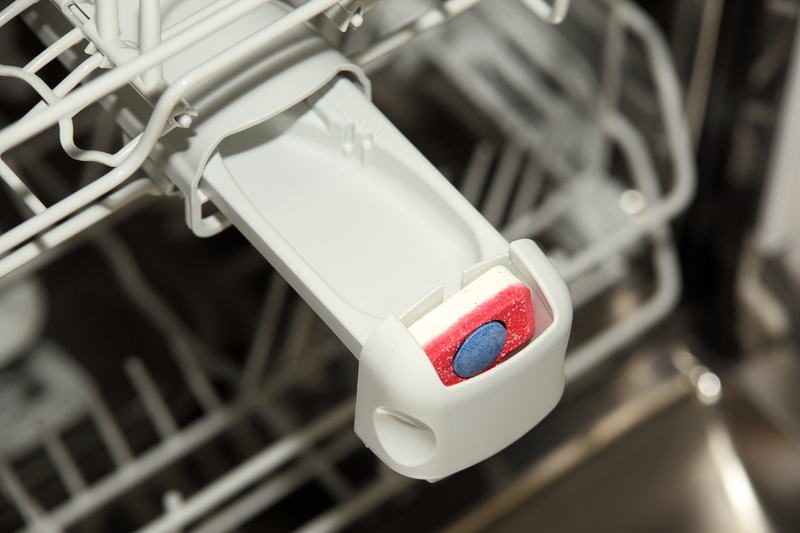Create a Healthy, Mold-Free Bathroom Environment
Posted on 19/08/2025
Create a Healthy, Mold-Free Bathroom Environment: Comprehensive Guide
A healthy, mold-free bathroom environment isn't just about appearances--it's crucial for your health and for maintaining your home's value. Bathrooms are naturally prone to high levels of moisture, making them the perfect breeding ground for molds and bacteria. With the right strategies, you can dramatically reduce humidity, prevent mold growth, and enjoy a bathroom that's clean, fresh, and safe for the entire family.
Why Maintaining a Mold-Free Bathroom Is Essential
Mold is more than a cosmetic problem. Persistent mold exposure can cause various health issues, especially for individuals with respiratory sensitivities, allergies, or weakened immune systems. Ensuring a mold-free bathroom environment is vital for the well-being of everyone in your home.
- Prevents health problems: Mold spores aggravate asthma, cause allergies, and trigger respiratory issues.
- Protects your property: Mold can degrade drywall, wood, and even cause structural damage.
- Enhances air quality: Removing and preventing mold means your bathroom isn't a source of airborne toxins.
- Aesthetic and odor improvement: Mold-free bathrooms look cleaner and smell fresher.
Did you know? Bathrooms are the second most common place in homes for mold outbreaks, right after basements! That's why learning how to create a healthy, mold-free bathroom is necessary for modern household management.

Understanding Bathroom Mold: Causes & Trouble Spots
Why Does Mold Thrive in Bathrooms?
Mold requires three primary things to grow: moisture, warmth, and an organic food source. Bathrooms naturally provide all three due to:
- Warm, humid air from hot showers, baths, and lack of ventilation
- Poor airflow--closed doors and windows trap steam
- Organic residues such as soap scum, skin oils, and shampoo
Common bathroom surfaces--tile grout, caulk, drywall, wood cabinets, and ceilings--give mold an easy place to thrive, especially in spots that remain damp or are slow to dry.
Identifying Mold Hotspots in Your Bathroom
- Shower and bathtub caulking
- Tile grout lines
- Ceilings and corners
- Beneath sinks and behind toilets
- Bathroom rugs and mats
- Bathroom windows and exhaust fans
Regularly inspecting these locations will help you catch mold early and maintain a healthy bathroom environment.
Step-by-Step Guide: How to Prevent Mold in Your Bathroom
To keep your bathroom mold-free, you should focus on moisture control, thorough cleaning routines, and preventive maintenance.
1. Prioritize Proper Ventilation
- Install an exhaust fan: A high-quality exhaust fan removes humid air. Run it during and for at least 20 minutes after showers.
- Open windows: Let fresh air in whenever possible to circulate air and remove dampness.
- Keep bathroom door open: After use, prop open the door to encourage air movement and faster drying.
Tip: If you don't have a fan, a simple dehumidifier can work wonders in reducing excess moisture.
2. Control Moisture Immediately
- Dry all surfaces: Wipe down tiles, mirrors, counters, and the floor after each use to quickly eliminate water droplets.
- Hang damp towels and bathmats: Avoid leaving them crumpled in a corner. Hang them separately to air-dry fully.
- Fix leaks promptly: Address any drips from faucets, showerheads, or pipes under sinks. Even minor leaks feed mold.
3. Regular Deep Cleaning
- Use mold-inhibiting cleaners: Clean tile grout, caulking, and corners weekly with anti-microbial or vinegar-based products.
- Scrub away soap scum: Soap residue feeds mold. Clean surfaces thoroughly to eliminate this food source.
- Wash bath mats and shower curtains: Launder them monthly to prevent mildew buildup.
4. Choose Mold-Resistant Materials
- Upgrade to mold-resistant paint and caulk: These products offer built-in defenses that outlast standard options.
- Opt for non-porous surfaces: Glass, porcelain, and sealed tiles are less susceptible to mold growth.
- Install moisture-resistant drywall: Especially in high-traffic or steamy bathrooms, use greenboard or cement board.
These investments help create a mold-free bathroom environment that lasts for years.
Comprehensive Mold Prevention Checklist: For a Healthy Bathroom
- Ventilation: Fan operates correctly; windows open regularly
- Dehumidification: Humidity levels below 50%
- Routine cleaning: Surfaces scrubbed weekly
- Laundry: Mats and towels washed and dried properly
- Active leak monitoring: Check under sinks, around toilets and tubs
- Material upgrades: Mold-resistant paint, caulks, and sealants
Follow this routine, and your bathroom will remain a clean, healthy, mold-free zone.
Natural and Chemical Solutions: Banishing Bathroom Mold
Eco-Friendly, Natural Mold Removal
- White vinegar: Spray full-strength vinegar onto surfaces, let sit 1-2 hours, then scrub and rinse.
- Baking soda paste: Mix baking soda and water; apply to stained grout and caulk, let sit, scrub, then wipe clean.
- Hydrogen peroxide (3%): Spray onto moldy areas, leave for 30 minutes, scrub, and rinse.
These gentle yet effective remedies are safe for homes with kids or pets and reduce reliance on harsh chemicals.
Using Commercial Cleaners Safely
- Bleach-based mold removers: Effective for killing visible mold but may damage some surfaces or release strong fumes.
- Dedicated bathroom cleansers: Choose EPA-registered products labeled as fungicidal or mold-killing.
- Always follow safety guidelines: Use gloves, ventilate the area, and never mix cleaning chemicals.
Important: After removing mold, always dry the area thoroughly to prevent regrowth.
Upgrades for a Mold-Resistant Bathroom Makeover
If you're planning a renovation, seize the opportunity to future-proof your bathroom against mold growth with these upgrades:
- Install a high-CFM exhaust fan: Sized appropriately for your bathroom's square footage.
- Switch to large, smooth tiles: Fewer grout lines mean fewer places for mold to take hold.
- Select seamless solid surfaces: For countertops and showers, consider options like quartz, acrylic, or cultured marble.
- Go with grout sealers: Apply waterproof sealant to grout lines every year for best protection.
- Waterproof flooring: Luxury vinyl plank or sealed tile resists water infiltration better than wood or laminate.
These improvements help ensure your bathroom environment remains healthy and mold-free, even as your needs evolve.
Maintaining Air Quality for a Healthy Bathroom Environment
In addition to controlling mold, aim to improve indoor air quality in your bathroom:
- Keep air moving: Use fans, open windows, or even a small portable air purifier.
- Choose fragrance-free products: Scented sprays and aerosols sometimes irritate lungs and mask moisture issues.
- Regularly empty trash and keep lids closed: Prevents moisture buildup and discourages bacteria.
- Consider indoor plants: Certain plants can subtly improve air quality, but ensure you don't overwater!
Troubleshooting Stubborn Mold in the Bathroom
When DIY Efforts Aren't Enough
- Persistent stains or foul odors: Hidden mold may require professional inspection for leaks behind walls or under floors.
- Extensive damage: If more than 10 square feet is covered in mold, consult remediation experts.
- Health symptoms persist: If mold allergies continue despite cleaning, professionals can address root causes.
Professional mold remediation specialists use specialized equipment to detect, remove, and treat even deep-seated contamination--ensuring your bathroom returns to a truly safe and mold-free environment.

FAQs: Creating and Maintaining a Healthy, Mold-Free Bathroom
- How often should I clean my bathroom to prevent mold?
Weekly cleaning is ideal, with daily spot checks for moisture buildup. - Can I paint over mold to get rid of it?
No. Always clean and remove all traces of mold first; then use mold-resistant paint. - What's the best temperature for a mold-free bathroom?
Mold loves warmth above 70?F (21?C), but good ventilation is more crucial than temperature alone. - Do essential oils work for preventing mold?
Some (like tea tree oil) have mild antifungal properties, but they should supplement--not replace--proper cleaning and moisture control.
Conclusion: Enjoy a Fresh, Healthy, Mold-Free Bathroom Environment
By taking systematic steps to create a healthy, mold-free bathroom environment, you're investing in your family's wellness and preserving your home's long-term value. Combine proper ventilation, routine cleaning, and smart renovations for best results. Make mold maintenance a regular household habit and enjoy a bathroom that's clean, safe, and inviting--today and for years to come!
Take action today--inspect your bathroom, start a stricter cleaning and ventilation routine, and consider easy upgrades to keep your bathroom a mold-free sanctuary for all.




